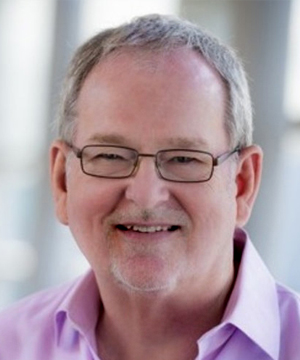
- thumphries@ucsd.edu
- (858) 534-1684
-
9500 Gilman Dr
La Jolla , California 92093
Professor Emeritus

A focus of my work has been on how “taking culture” among Deaf people helps us understand the circulation of culture in communities and especially the rapid acceleration of consciousness change. Culture has been “on its way somewhere” among Deaf people for 30 years. Tracing the movement of the discourse of culture in places like the Deaf media, in everyday talk, and in other kinds of texts allows us to see how Deaf people imagine their community and how to understand what is being communicated when they engage in such discourse. I am also focused on how a global discourse of culture among Deaf people has contributed to the reorganization of local educational practice for deaf children. I am fascinated with how "culture" has been so attractive to Deaf people as a means of self-representation, continuing the work Carol Padden and I began in Deaf in America: Voices from a Culture (1988) and Inside Deaf Culture (2005). In my teaching, I use my work on the language and culture of Deaf people to illustrate problems of silencing and voice, self-expression, self-representation, and dominant/non-dominant group relations.
Other work includes a paper on teacher talk among deaf and hearing teachers in different types of school settings for deaf children (Humphries & MacDougall 1999/2000). The significance of this work is that it illuminates our understanding of how ideology shapes teaching practice (specifically, the way teachers' language is structured and things are explained during instruction). In showing how deaf teachers make connections between ASL and English during instruction, we are able to see differences between how deaf teachers and hearing teachers vary in the frequency with which they use some obvious candidates for relating ASL and English such as fingerspelling and "chaining" (a process of combining different media in rapid sequence). We attribute these differences to differing ideologies of the school setting and also to the effect of indigenous practices from the different communities, deaf and hearing. The paper gives us insights into how English literacy is an achievable goal through the medium of a signed language, ASL, a connect that has historically been considered unlikely by many in deaf education. This research and other research linking ASL and English form the basis for an effort to reorganize teacher preparation in deaf
Having a joint appointment to the Education Studies Department at UCSD and serving as Vice Chair, I have spent the past 15 or more years developing a degree program which trains teachers to work with deaf children using an entirely new curriculum construct: the application of bilingual, multimodal teaching practice to classrooms of deaf children. The work is described in a recent paper on “Schooling in ASL” (2012). For the past three years, I have collaborated with several colleagues across several universities and several disciplines to publish papers that contribute to a national discourse about deaf children’s development, particularly the importance of the role of signed language in the critical period for language and cognitive development.